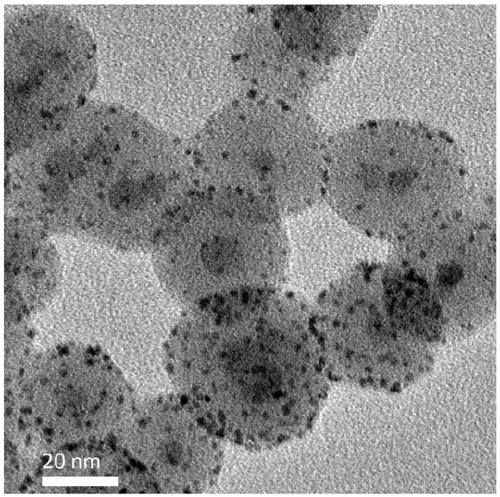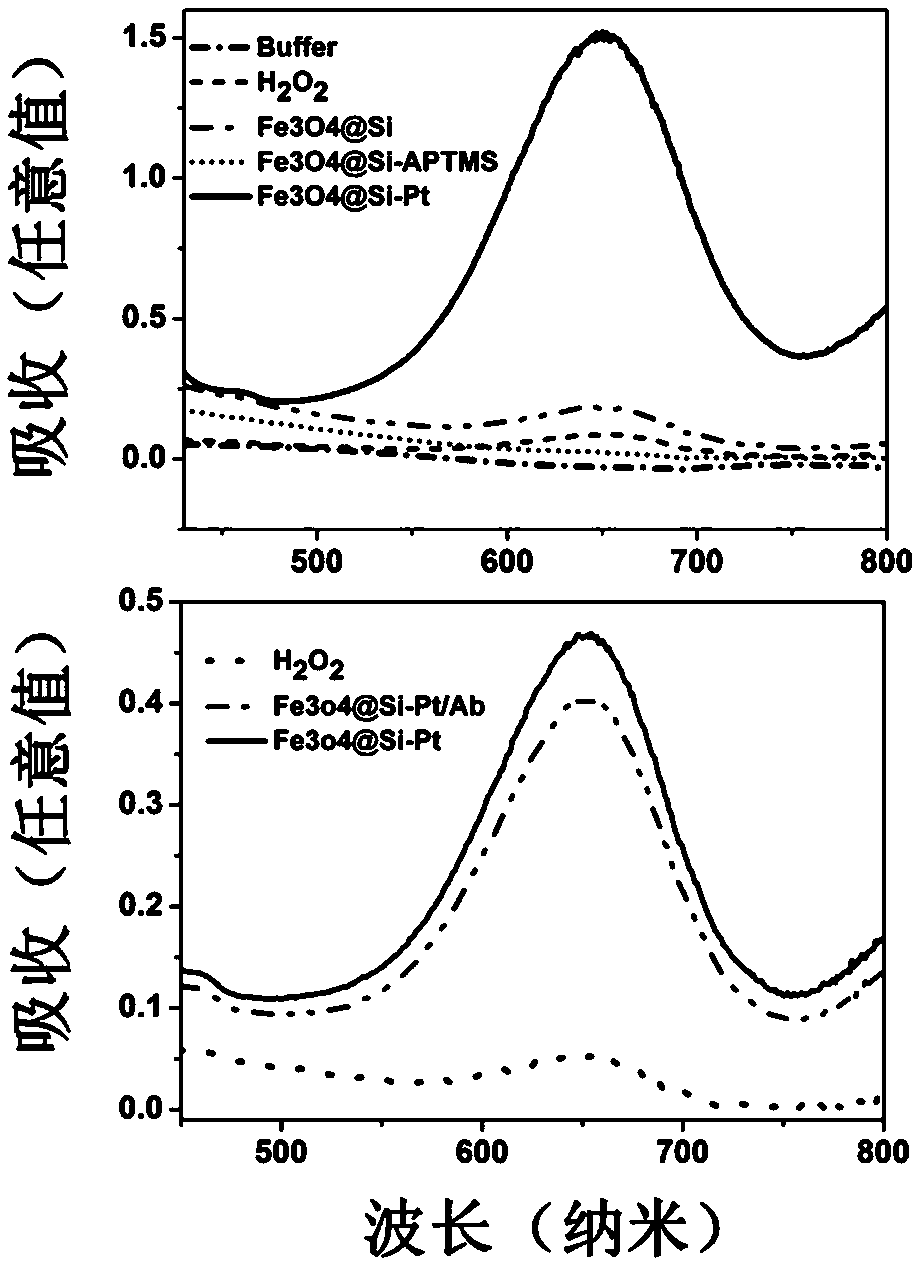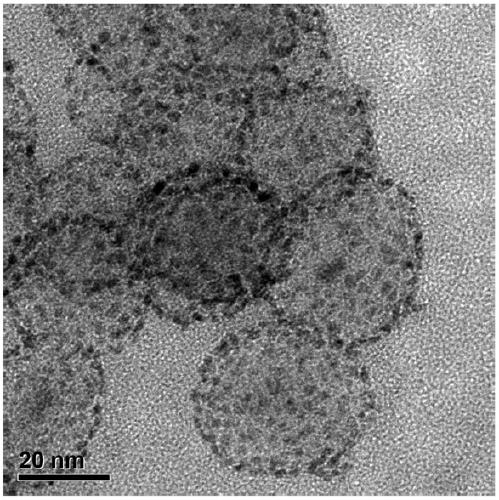Nano-bioprobe for detecting pathogenic bacteria and preparation method thereof
A nano-biological probe, pathogenic bacteria technology, applied in biochemical equipment and methods, microorganism-based methods, microorganisms, etc., can solve problems such as false positives and complex equipment, and achieve high sensitivity, environmental friendliness, and good application prospects. Effect
- Summary
- Abstract
- Description
- Claims
- Application Information
AI Technical Summary
Problems solved by technology
Method used
Image
Examples
Embodiment 1
[0040] This embodiment provides a nanobiological probe for detecting Staphylococcus aureus, which consists of a magnetic core-shell nanostructure coupled with a specific antibody against Staphylococcus aureus, wherein the magnetic core-shell nanostructure is made of ferric oxide particles The core and the silicon dioxide layer embedded with platinum particles are the shell layer, which is negatively charged as a whole and has the activity of simulating peroxidase. Its preparation method comprises the following steps:
[0041] (1) Disperse iron ferric oxide nanoparticles (1mg / mL, 10mL) dispersed in cyclohexane in 10mL polyethylene glycol octylphenyl ether (Triton X-100) / n-hexanol / water by mechanical stirring In the mixed solution (Triton X-100, n-hexanol, water molar ratio is 1:2:6) to form a reverse microemulsion system, then add 200 μL of ammonia water (28% by mass fraction) and 200 μL of ethyl orthosilicate to make positive Ethyl silicate is hydrolyzed in an alkaline enviro...
Embodiment 2
[0049] This embodiment provides a nano-biological probe for detecting Staphylococcus aureus, the difference from Example 1 is that in step (3), it is positively charged ferric oxide-silicon dioxide particles (1mg / mL, 2mL ) and negatively charged platinum nanoparticles (1 mg / mL, 2 mL) were mixed for 14 h.
[0050] image 3 For the Fe prepared in this embodiment 3 o 4 TEM image of @Si-Pt. As can be seen from the figure, the Fe prepared in this example 3 o 4 The particle size of @Si-Pt is relatively uniform, and there are more platinum particles on the surface, but some of them are aggregated, which makes the overall particle shape no longer uniform, which is not conducive to the later application in biological systems.
Embodiment 3
[0052] This embodiment provides a nano-biological probe for detecting Staphylococcus aureus, the difference from Example 1 is: polyethylene glycol octylphenyl ether (Triton X-100) / n-hexanol / water in step (1) The molar ratio of Triton X-100, n-hexanol and water in the mixed solution is 1:2:3.
[0053] Figure 4 For the Fe prepared in this embodiment 3 o 4 TEM image of @Si-Pt. It can be seen from the figure that the reverse microemulsion system formed in this example is not ideal, resulting in poor coating effect of silica and formation of multiple cores.
PUM
| Property | Measurement | Unit |
|---|---|---|
| size | aaaaa | aaaaa |
| thickness | aaaaa | aaaaa |
| particle diameter | aaaaa | aaaaa |
Abstract
Description
Claims
Application Information
 Login to View More
Login to View More - R&D Engineer
- R&D Manager
- IP Professional
- Industry Leading Data Capabilities
- Powerful AI technology
- Patent DNA Extraction
Browse by: Latest US Patents, China's latest patents, Technical Efficacy Thesaurus, Application Domain, Technology Topic, Popular Technical Reports.
© 2024 PatSnap. All rights reserved.Legal|Privacy policy|Modern Slavery Act Transparency Statement|Sitemap|About US| Contact US: help@patsnap.com










